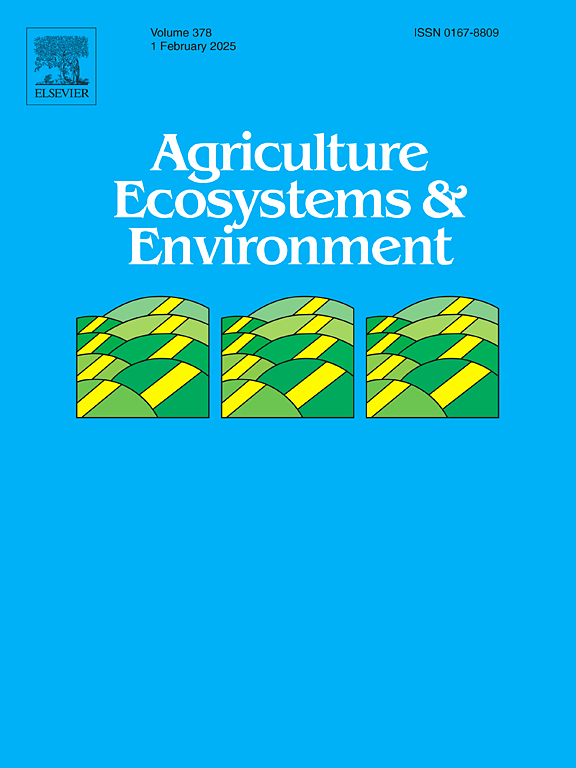景观环境影响当地管理对亚马逊可可农林系统中鸟类和蝙蝠的影响
IF 6
1区 农林科学
Q1 AGRICULTURE, MULTIDISCIPLINARY
引用次数: 0
摘要
本文章由计算机程序翻译,如有差异,请以英文原文为准。
Landscape context influences local management effects on birds and bats in Amazonian cacao agroforestry systems
Agricultural expansion and intensification are major drivers of biodiversity loss, particularly in tropical regions. Cacao agroforestry systems can both support and benefit from high levels of biodiversity via associated pest control services from birds and bats, although their potential to do so likely depends on local management and the landscape context. However, how interactions between local-scale agroforestry practices and landscape-scale habitat features shape bird and bat communities in these systems remains poorly understood. We studied birds and bats in 28 smallholder cacao agroforests in the Peruvian Amazon, comparing two regions with contrasting levels of agricultural intensification. We analyzed how local tree diversity and canopy cover interact with surrounding landscape tree cover and regional agricultural intensity to influence species richness and community composition. Results showed that local tree diversity increased bird richness, but only in the intensively farmed region. Local canopy cover had contrasting effects: it negatively impacted bird richness, abundance, and bat activity in more open landscapes (<55 % tree cover), but positively in forested landscapes (>80 % tree cover). Notably, these interactions were significant when considering the landscape tree cover at small spatial scales (250 m), but not at 500 m or 1000 m. Our findings highlight the importance of adapting cacao agroforestry management to the surrounding landscape. Retaining high local canopy cover supports flying vertebrate diversity and associated ecosystem services in forested landscapes, while restoration of landscape tree cover could enhance bird and bat populations that may contribute to pest suppression services in deforested areas.
求助全文
通过发布文献求助,成功后即可免费获取论文全文。
去求助
来源期刊

Agriculture, Ecosystems & Environment
环境科学-环境科学
CiteScore
11.70
自引率
9.10%
发文量
392
审稿时长
26 days
期刊介绍:
Agriculture, Ecosystems and Environment publishes scientific articles dealing with the interface between agroecosystems and the natural environment, specifically how agriculture influences the environment and how changes in that environment impact agroecosystems. Preference is given to papers from experimental and observational research at the field, system or landscape level, from studies that enhance our understanding of processes using data-based biophysical modelling, and papers that bridge scientific disciplines and integrate knowledge. All papers should be placed in an international or wide comparative context.
 求助内容:
求助内容: 应助结果提醒方式:
应助结果提醒方式:


